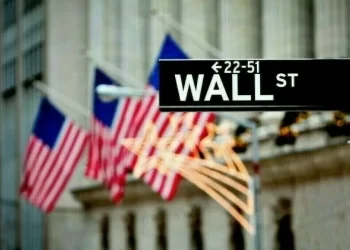The S&P 500 and the Nasdaq hit record highs on Thursday, boosted by strong gains in Nvidia, while investors assessed recent economic data and commentary from Federal Reserve officials to gauge the timing of interest-rate cuts this year.
Nvidia gained 1.4% to hit an all-time high, as the semiconductor bellwether was set to extend its lead as the world’s most valuable company after Dell and Super Micro Computer received server orders for Elon Musk’s AI startup.
Shares of Dell and Super Micro rose 1.0% and 6.3%, respectively.
Nvidia dethroned Microsoft on Tuesday to become the world’s most valuable company. The AI chip leader’s continued rally, coupled with softer-than-expected U.S. retail sales data, boosted the S&P 500 and the Nasdaq to close at record highs in the previous session.
The benchmark S&P 500 briefly breached the crucial 5,500-point mark in intraday trading, a year-end target multiple brokerages had forecast.
The energy sector was the top S&P 500 gainer, up 1.5% after oil futures hit seven-week highs, while real estate was the worst hit.
The number of Americans filing new claims for unemployment benefits fell last week, but overall strength in the jobs market persisted despite a gradual cooling. Another set of data showed U.S. single-family homebuilding fell in May amid continued high mortgage rates.
S&P 500, Nasdaq hit record highs on AI momentum
“Whether it’s CPI, or consumer spending, or savings rates, or jobless numbers, the data could change very marginally and slowly,” said Joseph Ferrara, Investment Strategist at Gateway Investment Advisors.
“I think the Fed is going to need to see a bit more, either conclusive or reaffirming data that the economy has potential to slow down. I don’t think we’re seeing it just yet.”
Meanwhile, Minneapolis Fed President Neel Kashkari said it would take a year or two to get inflation back to 2%, as wage growth might still be too high, spurring worries of interest rates staying elevated for longer.
Money markets currently see a 58% chance of a 25-basis-point rate cut by the U.S. central bank in September, according to LSEG’s FedWatch data.









